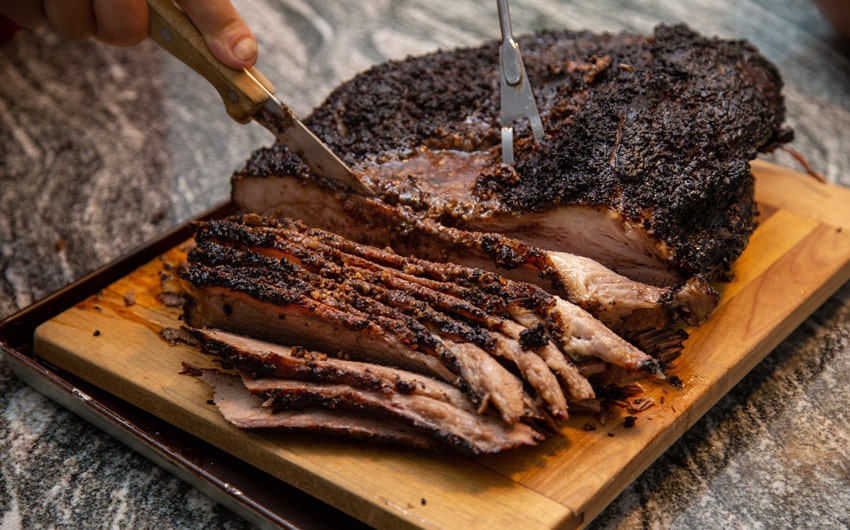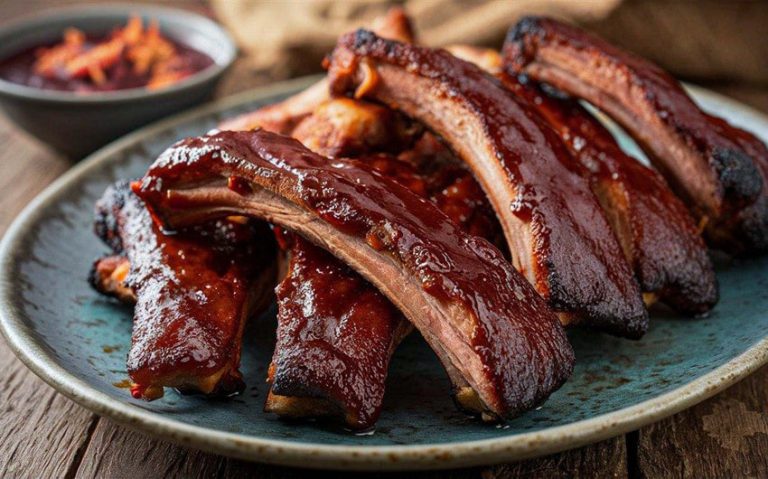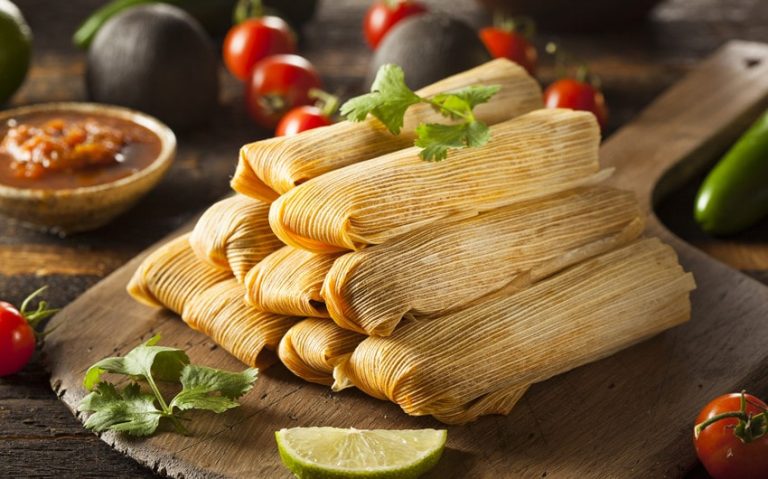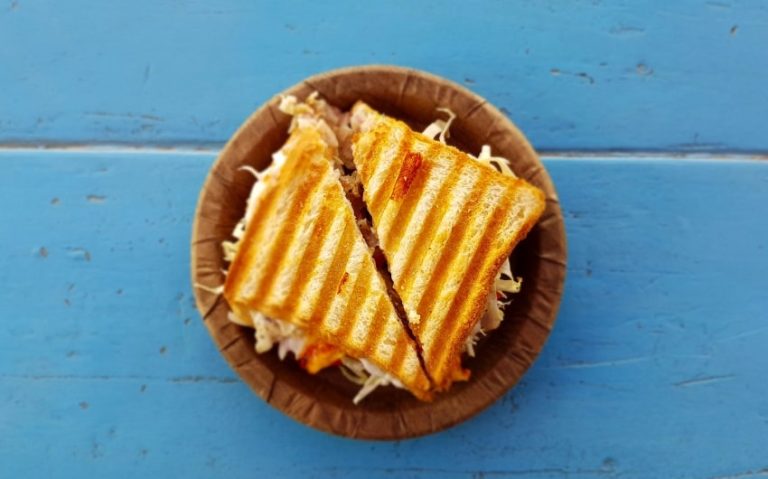Smoke Brisket at 180°F or 225°F: Which Temperature is Better?
Smoking brisket is an art that requires the right balance of time and temperature to get that tender, flavorful result everyone loves. If you’re wondering whether to smoke brisket at 180°F or 225°F, both options have their benefits.
Smoking at 180°F gives you richer smoke flavor, while 225°F cooks it faster and still delivers a juicy, tender brisket. It all comes down to your personal preference and schedule. In this guide, we’ll dive into the pros and cons of each temperature, helping you choose the best option for your next BBQ session.
Smoking Brisket at 180°F
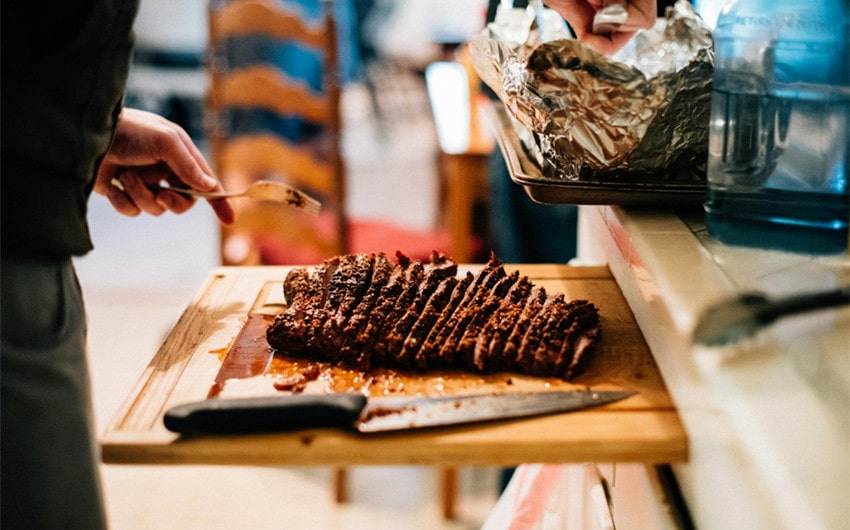
Smoking brisket at 180°F is a slower process, but it has its advantages for those who prefer deeper smoke flavor and a more tender texture. At this lower temperature, the meat has more time to absorb the smoke, resulting in a richer, more pronounced smoky flavor.
This method is ideal for BBQ enthusiasts who are willing to wait for the perfect bite, as the extended cooking time allows the brisket’s connective tissues to break down slowly, creating a melt-in-your-mouth experience.
However, the longer cooking time can be a drawback for those who are short on time. Smoking brisket at 180°F can take several hours longer than cooking at a higher temperature, which may not be practical for all situations.
Additionally, the longer exposure to heat can increase the risk of the meat drying out, so careful monitoring of moisture levels and the use of techniques like spritzing or wrapping the brisket in butcher paper or foil are essential to keep the meat juicy.
This temperature is best suited for overnight smoking or for those who truly enjoy the process of low-and-slow cooking. If you love the rich, smoky flavor and have the time to dedicate to a long cook, 180°F is an excellent choice.
Smoking Brisket at 225°F
Smoking brisket at 225°F is one of the most common temperatures for brisket smoking, often considered the sweet spot between cooking time and flavor. At this slightly higher temperature, you still get the benefit of a slow cook, but the process speeds up enough to make it more convenient for most home pitmasters.
It’s an excellent option for those who want tender, juicy brisket without having to commit to an all-day or overnight smoking session.
The 225°F temperature still allows the brisket to absorb plenty of smoke flavor, but it may be a bit less intense compared to the slower 180°F method. That said, the result is still delicious, with the meat becoming tender and flavorful as the fat renders and the connective tissue breaks down.
Additionally, cooking at 225°F helps form a nice bark (crust) on the brisket, which many BBQ lovers consider a key part of a perfect brisket.
One of the main advantages of smoking brisket at 225°F is the balance it offers. It provides a shorter cooking time than 180°F without sacrificing too much flavor or texture. This makes it a great option for weekend barbecues or gatherings where you want to serve a crowd without spending all day tending to the smoker.
In summary, 225°F is a reliable, tried-and-true temperature for smoking brisket that delivers great results in a reasonable amount of time, making it a go-to choice for many home cooks.
Comparing Flavor, Texture, and Bark
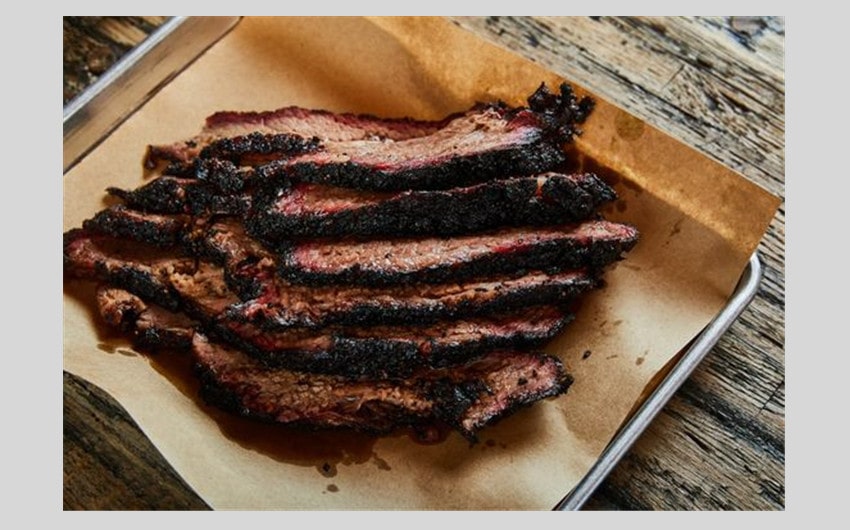
Image source: Pinterest
When deciding between smoking brisket at 180°F or 225°F, one of the most noticeable differences will be in the flavor, texture, and the formation of the bark. Each temperature produces distinct results, allowing you to tailor your brisket to your personal preferences.
Flavor
Smoking brisket at 180°F tends to deliver a richer, deeper smoke flavor. Since the meat spends more time in the smoker, it has more opportunity to absorb the flavors from the wood, leading to a smokier profile. This is ideal for BBQ purists who crave that intense, wood-fired taste.
On the other hand, at 225°F, the smoke flavor is still present but often less intense due to the shorter cooking time. While the brisket at this temperature retains a delicious smoky essence, it may appeal more to those who prefer a more balanced taste where the meat’s natural flavor is more pronounced.
Texture
The texture of the brisket can vary significantly depending on the cooking temperature. At 180°F, the slow cooking process allows the connective tissues to break down gradually, resulting in incredibly tender meat that almost falls apart. The low temperature is perfect for achieving a soft, buttery texture.
On the other hand, brisket smoked at 225°F still turns out tender and juicy, but the texture might have a bit more bite compared to the melt-in-your-mouth experience of brisket cooked at 180°F. It’s still incredibly satisfying but may be slightly firmer due to the quicker breakdown of collagen and fat.
Bark
The bark, or the flavorful crust that forms on the outside of the brisket, is a major consideration for BBQ enthusiasts. Smoking brisket at 225°F generally results in a more robust and well-developed bark. The higher temperature helps to caramelize the sugars in the rub and render the fat, giving you that signature crispy, flavorful outer layer.
At 180°F, the bark still forms, but it may be softer and less pronounced due to the lower temperature. If you’re a fan of thick, crunchy bark, 225°F might be your best bet, but if the interior texture and smoke flavor are more important to you, the softer bark at 180°F could be worth the trade-off.
Cooking Time and Managing the Stall
The cooking time for brisket can vary significantly depending on whether you choose to smoke it at 180°F or 225°F, and understanding how to manage the stall is crucial to ensure a perfectly cooked brisket.
Cooking Time
Smoking at 180°F is a much longer process. Depending on the size of the brisket, you could be looking at 12 to 18 hours of cooking time or more. This low temperature requires a lot of patience, as the brisket cooks slowly to reach the desired internal temperature of around 200°F-205°F.
If you have the time, this method rewards you with incredibly tender meat, but it does demand careful planning. On the other hand, smoking at 225°F reduces the cooking time significantly. A typical brisket cooked at 225°F can be done in about 10 to 12 hours, depending on its size and thickness.
This makes it a more practical option for those who want to enjoy smoked brisket without committing an entire day or overnight to the process.
The Stall
One of the most frustrating parts of smoking brisket is the “stall.” This happens when the brisket reaches a temperature around 150°F-170°F, and it seems like it stops cooking for several hours. The stall occurs because the meat starts to release moisture, which cools the surface of the brisket, causing the temperature to plateau.
When smoking at 180°F, the stall can last even longer due to the lower heat, and it may take a considerable amount of time for the temperature to start rising again. At 225°F, while the stall still happens, it generally doesn’t last as long because the higher heat helps push through it more quickly.
Managing the Stall
To manage the stall effectively, many BBQ pros use a method called “the Texas crutch,” where the brisket is wrapped in either foil or butcher paper once it hits the stall. Wrapping the meat helps trap moisture and heat, allowing the brisket to continue cooking through the stall without drying out.
This method works well at both 180°F and 225°F, but it’s particularly useful at the lower temperature, where the stall can be more drawn out. While wrapping does speed up the cooking process, it can soften the bark, so it’s a trade-off between texture and time.
If you’re smoking at 225°F, the stall may pass more quickly, so wrapping isn’t always necessary, but it can still be a helpful tool depending on your timeline.
Key Points for Smoking Brisket at 180°F or 225°F
- 180°F: Produces richer smoke flavor and more tender meat but requires a longer cooking time (12-18 hours). Ideal for those who want deeper smoke absorption and don’t mind the extended cook time.
- 225°F: Offers a balance between flavor and cooking time, with a faster cook (10-12 hours) and a well-formed bark. It’s a popular choice for convenience and still delivers juicy, tender brisket.
- Flavor: 180°F provides more intense smoke flavor, while 225°F offers a balanced taste with a less pronounced smoky profile.
- Texture: 180°F results in melt-in-your-mouth tenderness, whereas 225°F delivers slightly firmer, yet still tender, meat.
- Bark: 225°F creates a thicker, crunchier bark, while 180°F forms a softer bark.
- The Stall: Both temperatures experience the stall, but it lasts longer at 180°F. Wrapping the brisket (Texas crutch) can help push through the stall more quickly.

